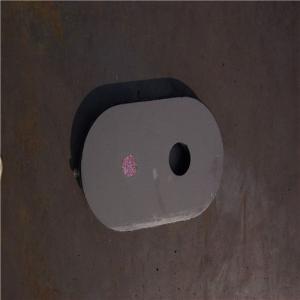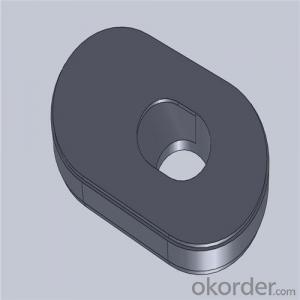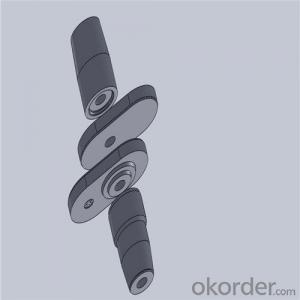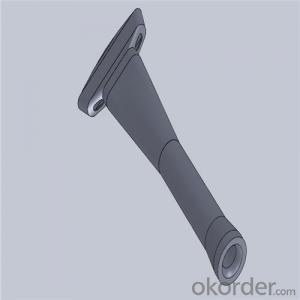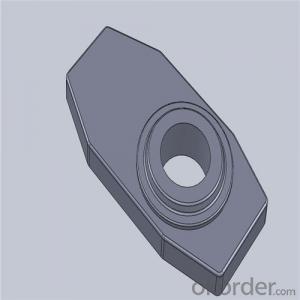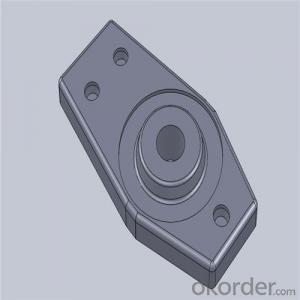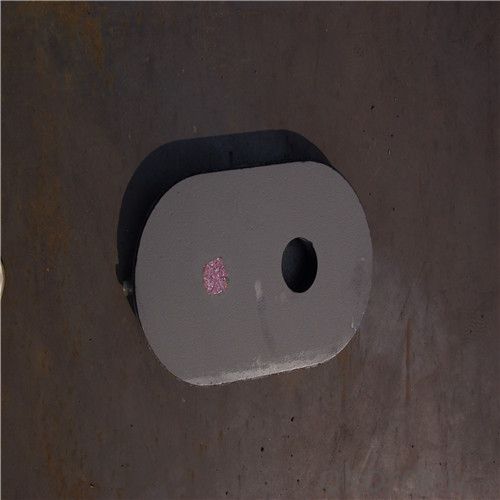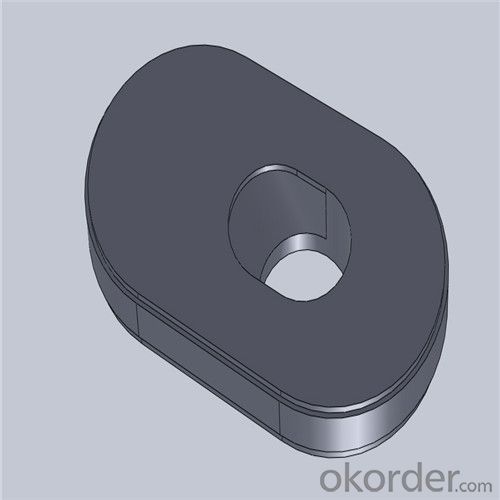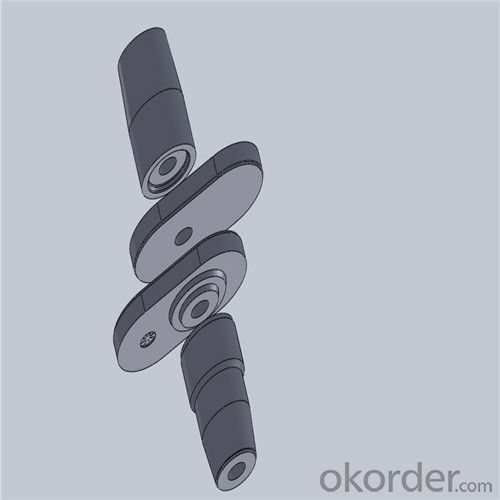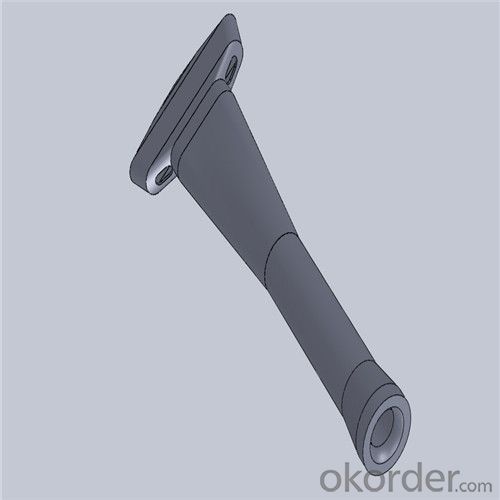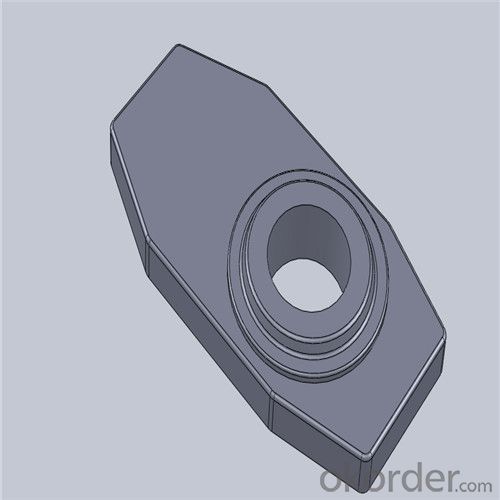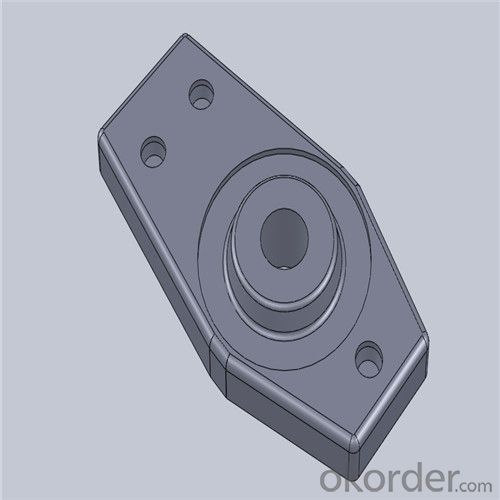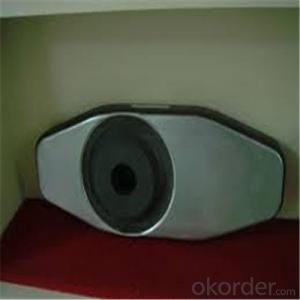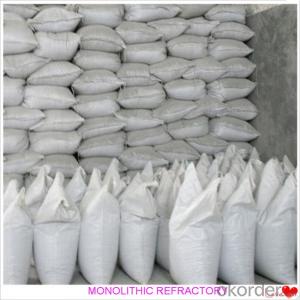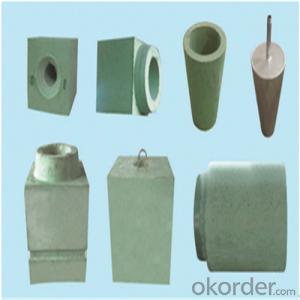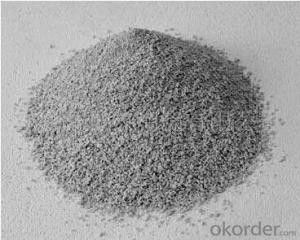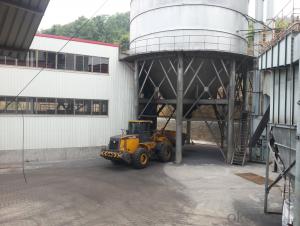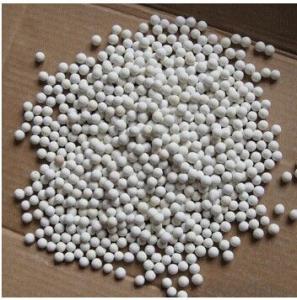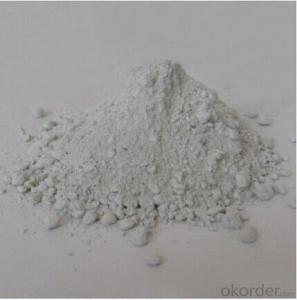Monolithic Refractories for High Performance & Temperature Ladle Sliding Gate in Steel Industry
- Loading Port:
- Shanghai
- Payment Terms:
- TT OR LC
- Min Order Qty:
- 100 pc
- Supply Capability:
- 1000 pc/month
OKorder Service Pledge
OKorder Financial Service
You Might Also Like
Quick Details for High Performance Refractory Ladle Slide Gate
| Place of Origin: | China (Mainland) | Shape: | Plate | Material: | Alumina Block |
| SiO2 Content (%): | N/A | Al2O3 Content (%): | 80-90% | MgO Content (%): | N/A |
| CaO Content (%): | N/A | Refractoriness (Degree): | 1770°< Refractoriness< 2000° | CrO Content (%): | N/A |
| SiC Content (%): | N/A | Model Number: | CS80 | Brand Name: | |
| Product name: | High performance refractory ladle slide gate | Model No.: | cs80 | Brand name: | CMAX |
| Quality: | Al-C or Al-Zr-C | Service life: | 4-6 heats | Apparent porosity: | 7% Max |
| Bulk density:: | 3.1 MIN | C.C.S: | 120MPA | MOQ: | 100 pcs for trial |
| Delivery time: | 60 working days upon receipt of deposit |
Packaging & Delivery
| Packaging Details: | Inner carton packing, outer wooden case suitable for long term sea shipping |
| Delivery Detail: | three months working days upon receipt of deposit |
Specifications
Surface flatness less than 0.05mm
High mechanical strength
Erosion resistance
Oxidation resistance
Thermal shock stability
Slide gate plate widely including Alumina carbon and Alumina Zirconia Carbon slide gate plate, MgO and MgO-spinel slide gate plate,nonoxides bonding slide gate plateand unburned slide gate plate.
General Chemical Analysis for refractory ladle slide gate :
Alumina -Zirconia-Carbon material
| Al-Zr-C Material | |||||
| Al2O3 | C | ZrO2 | Apparent porosity | Bulk density | C.C.S |
| (% minm) | (% minm) | (% minm) | (% max) | (gm./cc minm) | (MPa minm) |
| 85 | 3 | 5 | 7 | 3.1 | 120 |
| 85 | 3 | 4 | 7 | 3.1 | 120 |
Composite type: Al-Zr-C for working line, outer Al-C material
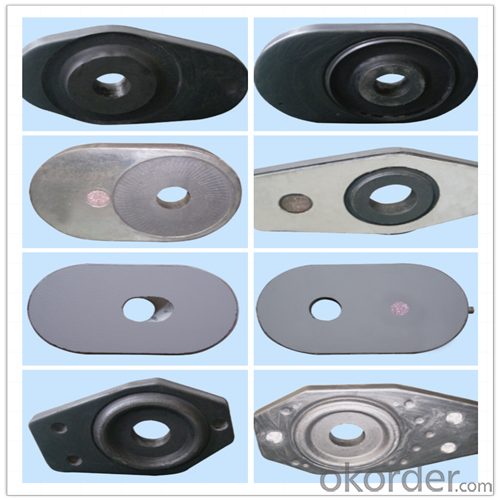
| Al-Zr-C & Al-C Material | ||||||
| Al2O3 | C | ZrO2 | Apparent porosity | Bulk density | C.C.S | |
| (% minm) | (% minm) | (% minm) | (% max) | (gm./cc minm) | (MPa minm) | |
| Inner side (Working face) | 85 | 3 | 4 | 7 | 3.1 | 120 |
| Outside | 90 | 3 | 0 | 9 | 3 | |
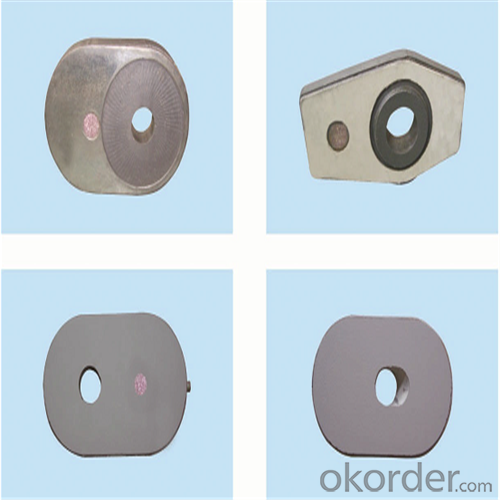
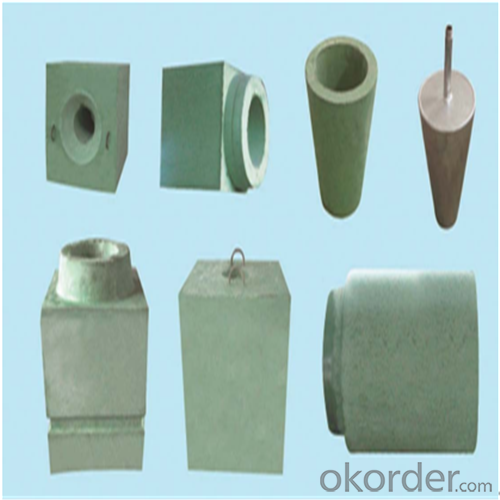
About us
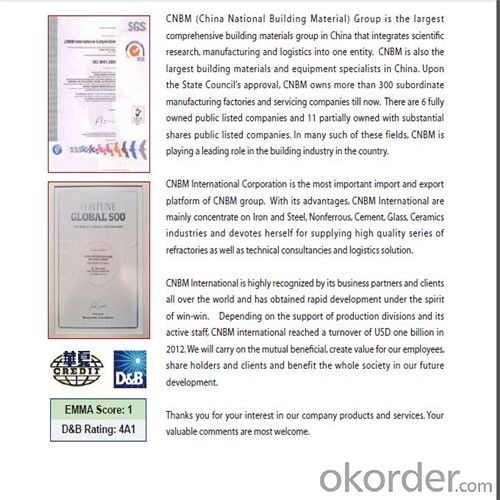
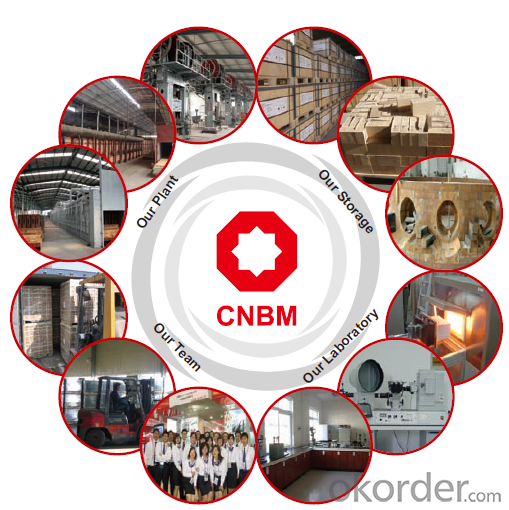
Sample is on your request.
Welcome to visit our factory~
- Q: What are the key trends in the use of monolithic refractories in the iron and steel industry?
- There are several key trends in the use of monolithic refractories in the iron and steel industry that are worth noting. Firstly, there is a growing demand for monolithic refractories due to their superior performance characteristics compared to traditional brick refractories. Monolithic refractories offer higher thermal shock resistance, better insulation properties, and improved resistance to chemical attacks. This has led to their increased usage in various applications within the iron and steel industry. Secondly, there is a shift towards the use of low-cement and ultra-low cement castables in monolithic refractories. These materials have a reduced cement content, resulting in improved refractory properties such as higher strength, better corrosion resistance, and increased resistance to thermal spalling. This trend is driven by the need to enhance the overall efficiency and durability of refractory linings in iron and steel manufacturing processes. Another important trend is the development of advanced monolithic refractories with enhanced sustainability and environmental performance. The iron and steel industry is under increasing pressure to reduce its carbon footprint and minimize environmental impact. As a result, there is a growing emphasis on the use of environmentally friendly binders and additives in monolithic refractories. These new materials not only offer excellent refractory properties but also contribute to the industry's sustainability goals. Furthermore, there is a rising focus on the development of monolithic refractories that can withstand extreme operating conditions. Iron and steel manufacturing processes involve high temperatures, aggressive chemical environments, and severe mechanical stresses. Therefore, there is a need for monolithic refractories that can endure these harsh conditions without compromising their performance. The industry is investing in research and development to create refractories that provide exceptional resistance to thermal shock, abrasion, and erosion. Lastly, there is an increasing adoption of digital and smart technologies in the monitoring and maintenance of monolithic refractories. With the advancements in sensor technology and data analytics, it is now possible to collect real-time data on the condition and performance of refractory linings. This allows for proactive maintenance, early detection of potential issues, and optimization of refractory usage, resulting in improved operational efficiency and cost savings. In conclusion, the key trends in the use of monolithic refractories in the iron and steel industry include the demand for superior performance, the shift towards low-cement and ultra-low cement castables, the development of sustainable materials, the focus on extreme operating conditions, and the adoption of digital and smart technologies for monitoring and maintenance. These trends reflect the industry's continuous efforts to enhance the efficiency, durability, and environmental sustainability of refractory linings in iron and steel manufacturing processes.
- Q: What are the typical operating temperatures for monolithic refractories?
- The specific composition and type of refractory material determine the typical operating temperatures for monolithic refractories. Generally, these refractories are designed to endure high temperatures ranging from 1500°C (2732°F) to 1800°C (3272°F) and sometimes even higher. Industries such as steelmaking, cement production, glass manufacturing, and petrochemical processing commonly utilize these refractories, subjecting them to extreme thermal conditions. Temperature limits vary for different types of monolithic refractories. For example, basic refractories made of magnesia or dolomite can withstand temperatures up to 1800°C (3272°F). Conversely, alumina-based refractories typically handle temperatures up to 1700°C (3092°F). Silicon carbide-based refractories exhibit even higher temperature resistance, with the capacity to endure temperatures exceeding 2000°C (3632°F). Choosing the appropriate monolithic refractory material is crucial, considering the specific operating temperature requirements of the application. Using refractories beyond their recommended temperature limits may result in thermal shock, spalling, reduced performance, equipment failure, or safety hazards. Therefore, it is essential to consult with refractory manufacturers or experts in the field to ensure the correct selection and optimal performance of monolithic refractories in high-temperature applications.
- Q: What are the challenges in recycling and disposing of monolithic refractories?
- One challenge in recycling and disposing of monolithic refractories is the high temperature resistance and durability of these materials, which makes them difficult to break down and recycle. Additionally, the presence of various contaminants, such as metals and other impurities, can further complicate the recycling process. Proper disposal of monolithic refractories also poses challenges due to the potential environmental impact of disposing of these materials, as they may contain hazardous substances. Therefore, finding efficient and environmentally-friendly methods for recycling and disposing of monolithic refractories remains a challenge in the industry.
- Q: How do monolithic refractories contribute to the overall efficiency of ladle slagging operations?
- Monolithic refractories play a vital role in enhancing the overall efficiency of ladle slagging operations, which involve removing impurities from molten metal in a ladle before pouring it into molds or further processing. One of the primary benefits of monolithic refractories is their capacity to withstand high temperatures, a crucial factor in ladle slagging operations. The refractory lining in the ladle must endure the intense heat generated by the molten metal and slag, as well as the chemical reactions occurring during the process. By possessing high thermal stability, monolithic refractories prevent the lining from cracking or deteriorating, thus ensuring the integrity of the ladle and maintaining its efficiency. Furthermore, monolithic refractories offer excellent resistance against chemical erosion and corrosion. In the ladle slagging process, the molten metal and slag may contain impurities and aggressive chemicals such as sulfur, phosphorus, and other oxides. These substances can attack and degrade the lining of the ladle, compromising its efficiency. However, monolithic refractories are specifically designed to withstand these chemical attacks, thereby prolonging the lifespan of the ladle and reducing the need for frequent repairs or replacements. Moreover, monolithic refractories possess exceptional thermal insulation properties. Precise temperature control is essential in ladle slagging operations to facilitate desired chemical reactions and efficient impurity removal. The thermal insulation provided by monolithic refractories helps maintain a consistent temperature within the ladle, preventing heat loss and facilitating optimal slagging conditions. Additionally, this insulation minimizes energy consumption and improves the overall energy efficiency of the ladle slagging process. In conclusion, monolithic refractories make significant contributions to the overall efficiency of ladle slagging operations. Their ability to endure high temperatures, resist chemical erosion, and provide thermal insulation ensures the integrity and longevity of the ladle. By reducing the need for frequent repairs and enabling precise temperature control, monolithic refractories optimize the slagging process, leading to enhanced productivity and cost-effectiveness.
- Q: How do monolithic refractories resist corrosion from molten metals?
- Monolithic refractories resist corrosion from molten metals due to their inherent chemical composition and physical properties. These refractories are made using high-quality materials that possess excellent resistance to chemical attack and high temperatures. They are designed to have a dense and compact structure, which helps in preventing the penetration of molten metals and minimizing the reaction between the refractory and the metal. Additionally, monolithic refractories often contain additives or binders that enhance their resistance to corrosion, making them highly effective in withstanding the aggressive nature of molten metals.
- Q: How do monolithic refractories withstand the alkali attacks in cement kiln applications?
- Due to their unique composition and structure, monolithic refractories are capable of withstanding alkali attacks in cement kiln applications. Unlike traditional brick refractories, these refractories are made from a single material, resulting in a more uniform and dense structure. When exposed to alkali attacks in cement kilns, monolithic refractories create a barrier against the corrosive alkali substances by forming a protective layer on the surface. This protective layer is formed through reactions between the alkali substances and the refractory material, leading to the development of a stable compound that resists further attacks. Additionally, monolithic refractories possess high chemical resistance, allowing them to endure the aggressive conditions inside cement kilns. Their low porosity design minimizes the infiltration of alkali substances into the refractory material, reducing the risk of alkali attacks and extending the lifespan of the refractory lining. Furthermore, monolithic refractories are frequently manufactured using materials with elevated melting points, such as alumina, silica, and magnesia. These materials exhibit exceptional thermal stability, enabling the refractories to withstand the high temperatures in cement kilns without significant deterioration. This thermal stability is crucial in preventing the formation of cracks and spalling, which could permit alkali penetration and subsequent harm to the refractory lining. In conclusion, monolithic refractories are specifically engineered to resist alkali attacks in cement kiln applications by forming a protective layer, possessing high chemical resistance, and demonstrating excellent thermal stability. These characteristics make them an ideal choice for lining cement kilns, ensuring long-term performance and durability.
- Q: What are monolithic refractories and how are they different from other refractory materials?
- Monolithic refractories are a type of refractory material that is produced and applied in a single, unified form. Unlike other refractory materials, such as bricks or tiles, monolithic refractories are not pre-formed into specific shapes or sizes. Instead, they are generally composed of a mix of aggregates, binders, and additives, which are then installed in place and cured to form a solid, dense structure. One key difference between monolithic refractories and other refractory materials is their versatility and ease of installation. Traditional refractory bricks or tiles require skilled labor and careful assembly to create a lining or structure. Monolithic refractories, on the other hand, can be poured, sprayed, or gunned into place, allowing for a much faster and more efficient installation process. This makes them particularly suitable for complex shapes or areas that are difficult to access. Another difference lies in the physical properties of monolithic refractories. While bricks and tiles are typically characterized by their high mechanical strength and resistance to thermal shock, monolithic refractories can be tailored to exhibit a wide range of properties. They can be engineered to have excellent thermal insulation, superior corrosion resistance, or enhanced abrasion resistance, depending on the specific application requirements. This flexibility makes monolithic refractories suitable for a variety of industries, including steel, cement, glass, and petrochemical. Furthermore, monolithic refractories have the advantage of being able to expand and contract with temperature changes, unlike rigid brick structures. This thermal flexibility helps to minimize cracking and damage caused by thermal cycling, prolonging the lifespan of the refractory lining. Additionally, monolithic refractories offer better refractory integrity and reduced joint failure, as there are no seams or weak points that can be susceptible to thermal stresses. In summary, monolithic refractories are a versatile and convenient type of refractory material that can be customized to meet specific application requirements. Their ease of installation, thermal flexibility, and tailor-made properties make them distinct from other refractory materials such as bricks or tiles.
- Q: Can monolithic refractories be used for the lining of ladle refining furnaces and VOD converters?
- Indeed, ladle refining furnaces and VOD converters can benefit from the utilization of monolithic refractories. These refractories, which consist of a single, uniform material, can be molded and installed in various settings, particularly those involving extreme temperatures such as ladle refining furnaces and VOD converters. The advantage of monolithic refractories lies in their simplicity of application and repair. They can be either cast or gunned in place, offering flexibility in terms of lining design and installation. The lining of ladle refining furnaces and VOD converters requires materials capable of withstanding high temperatures, chemical reactions, and mechanical stresses. Monolithic refractories are well-suited for these demanding applications due to their exceptional resistance to thermal shock and chemical attack. In the case of ladle refining furnaces, monolithic refractories are used to line the vessel in which molten metal is contained and processed. By doing so, these refractories help to maintain the desired temperature and safeguard the ladle from the corrosive effects of both molten metal and slag. Additionally, they serve as insulation to minimize heat loss and enhance energy efficiency. VOD converters, on the other hand, are employed in the steelmaking process to reduce the carbon content of molten steel. Monolithic refractories play a crucial role in lining the converter's vessel and ensuring the maintenance of the required temperature for the decarburization reaction. Furthermore, they provide protection against the corrosive impact of molten metal and slag, thereby guaranteeing the converter's durability and performance. To summarize, monolithic refractories possess outstanding characteristics that make them an excellent choice for lining ladle refining furnaces and VOD converters. Their versatility, ease of installation, and ability to withstand high temperatures and chemical attack render them perfectly suited for these critical applications within the steel industry.
- Q: What are the key properties and characteristics of monolithic refractories?
- Monolithic refractories, renowned for their ability to be shaped or installed in a single piece without joints, are a type of refractory material. They find their utility in high-temperature applications where traditional brick or tile refractories may not suffice. One noteworthy attribute of monolithic refractories lies in their superior thermal stability. They can withstand extreme temperatures without significant expansion or contraction, making them an ideal choice for furnaces, kilns, and other heat-intensive environments. This quality ensures the maintenance of their structural integrity and grants long-lasting performance. Another significant characteristic of monolithic refractories is their high resistance to thermal shock. They can endure abrupt temperature changes without cracking or spalling, a crucial aspect when the refractory material is exposed to alternating hot and cold conditions. The resistance to thermal shock ensures the refractory lining's longevity, reducing the need for frequent repairs or replacements. Monolithic refractories also demonstrate commendable mechanical strength, enabling them to withstand the mechanical stresses and loads imposed on them during usage. They possess excellent load-bearing capacity, resisting abrasion, erosion, and impact, making them suitable for applications where the refractory material faces mechanical wear or impact. Moreover, monolithic refractories offer the advantage of easy installation and repair. Unlike traditional refractories that necessitate skilled labor and time-consuming bricklaying techniques, monolithic refractories can be cast, gunned, or sprayed into place. This effortless installation expedites turnaround times and minimizes downtime during repairs or maintenance. Lastly, monolithic refractories exhibit commendable chemical resistance to various corrosive agents, such as acids, alkalis, and molten metals. This property renders them suitable for use in industries where the refractory material encounters aggressive chemical environments, including the steel, petrochemical, and glass industries. In summary, monolithic refractories possess excellent thermal stability, high resistance to thermal shock, good mechanical strength, effortless installation and repair, and commendable chemical resistance. These properties establish them as the preferred choice in high-temperature applications where durability, reliability, and performance are of utmost importance.
- Q: What are the main challenges in designing the lining system with monolithic refractories?
- The main challenges in designing the lining system with monolithic refractories include ensuring proper installation and curing, achieving adequate strength and durability, managing thermal expansion and contraction, controlling shrinkage and cracking, and maintaining chemical resistance against corrosive environments. Additionally, the selection of suitable raw materials, proper mixing techniques, and effective installation methods are crucial to overcome these challenges and ensure a successful lining system design.
Send your message to us
Monolithic Refractories for High Performance & Temperature Ladle Sliding Gate in Steel Industry
- Loading Port:
- Shanghai
- Payment Terms:
- TT OR LC
- Min Order Qty:
- 100 pc
- Supply Capability:
- 1000 pc/month
OKorder Service Pledge
OKorder Financial Service
Similar products
Hot products
Hot Searches
Related keywords
